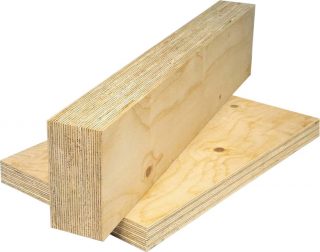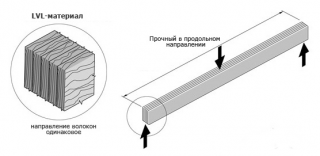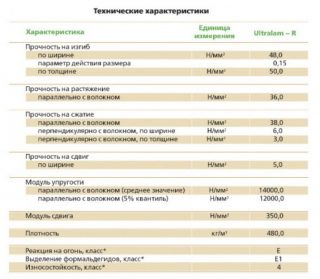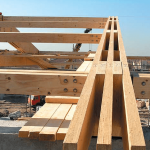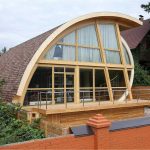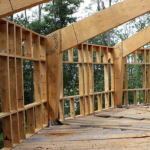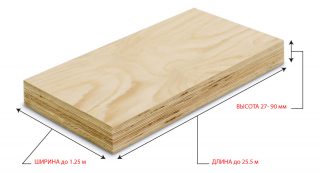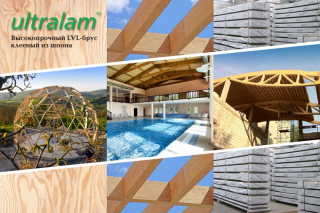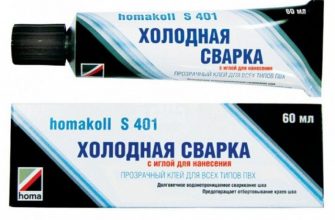Structural building material is produced from glued veneer. The technology makes it possible to obtain wear-resistant and durable products that are not inferior to solid wood products in many qualities. Massive natural wood is gradually being replaced by composite products from natural raw materials, one of the types of which is LVL.
Material description
Varieties products:
- beams (bars);
- plates of different sizes.
Internal structure provides high compressive strength, so the building material is used when constructing load-bearing structures for walls and roofs... The surface of the timber is veneered with the highest grade material. The inner layers are joined so that parts of different densities are evenly distributed, and the joints do not coincide vertically.
Fire resistance laminated veneer lumber higher than natural wood, which is explained by the layered structure. Inside, thin veneer sheets alternate with non-flammable glue. The timber will be charred if the temperature in the fire zone is + 300 ° C, while retaining its original strength for 30 minutes.
History of appearance
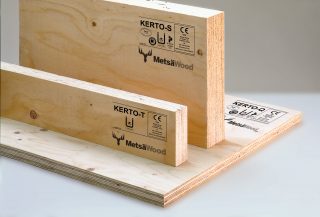
LVL Beam (transcript - Laminated Veneer Lumber) was created in 1935 in the USA, was engaged in the development laboratory of the Federal Forestry... It was launched into production in the mid-sixties of the twentieth century by a legal corporation Trust joistowned by the company Weierhauser.
The West has been producing products since 1973, it has been assigned the trademark Kerto... Produced by bar holding Metsa Wood from Finland, part of the timber industry concern under the name "Metsa Group". High-performance equipment makes it possible to produce a volume of goods of about 220 thousand m³ per year.
Russia launched production only in 2009... The first manufacturer was the enterprise "Talion Terra" from the Tver region (Torzhok), owned by the STOD company.
How is it produced
Further stages of manufacturing:
- from the finished veneer to form blanks, use sheets, the thickness of which does not exceed 3 mm;
- additionally dried to maintain the specified humidity (5%);
- secondary sorting involves separation of semi-finished products by quality and density;
- fitted veneer parts connect with glue into the whole canvas;
- used for dialing in thickness 9 - 24 sheets, to obtain a monolith, use press;
- cut material in standard sizes for slabs, bars and beams.
The resulting products undergo technical control, periodically samples are tested in the laboratory for strength, water resistance, and other qualities. The products are then packaged for shipment.
Characteristics
Specifications:
- humidity finished products 8 - 10%;
- roughness surfaces not higher than 320 microns;
- plane deviation no more than 1.5 mm per linear meter;
- limit flexural strength along the fibers - 48 MPa;
- limit tensile strength - 16 - 22.5 MPa;
- fire resistance class - K1;
- category wear resistance — 4;
- emission class formaldehyde - E1;
- density - 48 kg / m³.
In terms of strength, the material is superior to wood, due to the uniformity of the structure along the entire length. Hygroscopic products retain their dimensions and weight at subzero temperatures, which is important when installing beams on long floor spans. Ideal geometry allows for tight and sealed joints.
Is marriage possible
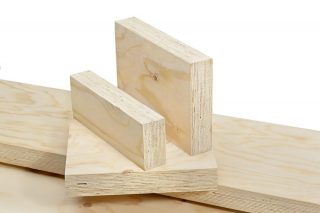
Select for release only conifers, while the raw material is taken immediately from the felled trunks. During the manufacturing process passes several stages of rejection, therefore, only high-quality veneer gets to the production line.
Technologists and owners of manufacturing companies provide measures to prevent marriage:
- they use automatic equipment from trusted manufacturers;
- lines are equipped laser control system process temperature, workpiece humidity, glue volume, hardener quality;
- engineers and technicians regularly check the operation of the machines, carry out adjustment, adjustment of pressure, temperature conditions;
- mixing of the glue with the hardener takes place under the control of machines.

Varieties and scopes
Material use during the construction of facilities in various industries, of which make workshops, offices, build LVL houses... The plate variety is put as power permanent formwork.
Mainly glued beams are used for construction load-bearing elements of buildings:
- floors with the installation of purlins;
- wall frames;
- ridge and balcony beams;
- rafters, elements of interfloor membranes.
The elements cover large spans up to 36 meters long, the beams are immune to harmful air components, dampness, and ultraviolet light.
Distinguish types of LVL material:
- constructional;
- with transverse fibers.
The beam is used in the structures of swimming pools, agricultural buildings, warehouses with chemically aggressive products, production workshops with chemical emissions into the atmosphere. The material is well exploited in seismically hazardous areas.
Structural
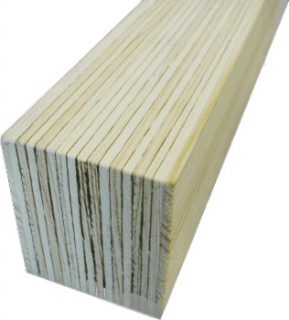
In this type of timber, the subsequent layers of veneer are placed so that they the fibers were rotated in the same direction (along). This increases the load-bearing capacity of the product.Due to their high strength, structural bars are placed as elements of the skeleton of a frame building, along with metal or wooden posts and crossbars.
The structural type of timber not only can withstand the weight of the floor, roof, wall filling between the frame elements, but also protects the interior of the house from the cold. For example, a balcony cantilever beam made of moisture-sensitive material protrudes outside the wall and becomes a conductor of cold in freezing weather. The use of LVL solves this problem, since the material is dry and does not freeze.
With cross layers
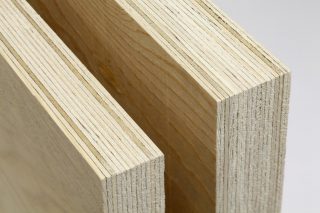
The second type of product has an internal structure. Changing the stacking of the layers increases the flexural and tensile strengths. Such material does not have longitudinal twisting, which sometimes occurs in structural products.
Bonding method:
- the first four layers are laid with fibers in the direction of the longitudinal line of the product;
- the fifth layer is arranged with fibers across the section;
- the rest of the layers are set as the first.
This is how plate LVL is more often produced. Panels are used for wall cladding, construction of internal partitions, they are used for door leafs... Surface of slabs looks attractive, therefore, the wall layer is often not additionally decorated.
Sizes of a bar
Transverse dimensions of the bar:
- the thinnest has a thickness of 18 mm, and the most massive - 102 mm;
- the width ranges from 100 to 1800 mm;
- the length according to the norms cannot be more than 18 m.
For comparison, the section of a simple composite beam 80x240 and 160x320 corresponds in strength to a glued LVL beam with a section of 45x280 and 69x400, respectively.
LVL timber manufacturers
The second Russian enterprise "Ugra" for LVL production launched production in the Tyumen region, Khanty-Mansi district (Nyagan)... Production processes are automated, laser control technologies are used, so the products meet the declared quality and are not inferior to imported goods.
Products of a foreign manufacturer of the trademark are supplied to Russia Kerto (Finland)... The material is in demand for pre-fabricated buildings for its impeccable quality.

